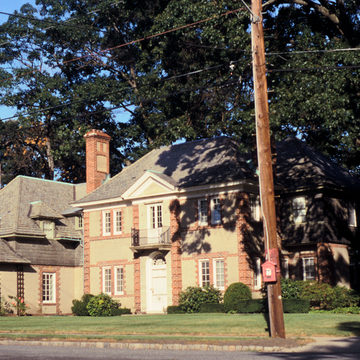The houses on Everett Avenue offer a coherent ensemble of Arts and Crafts residential designs by Boston architects working at the turn of the twentieth century. These architects were far more conservative than their counterparts in Chicago and Southern California, producing residences that were English in sensibility and grounded in historical sources. Nevertheless, like the more innovative Arts and Crafts designs, these houses are finished with handcrafted materials. Also like Midwest and West Coast houses, these are generally broad in their massing, with open interior plans often complemented by elaborate gardens with pergolas and terraces.
Frank Patterson Smith designed his own house (1899) at 30 Everett Avenue to take advantage of the views of Upper Mystic Lake behind it. Smith's house is consistent with the work of such contemporary English architects as George and Peto and Ernest Newton. The Everett Chadwick House (1909, Warren and Smith) at 24 Everett Avenue also looks out on the lake. Although the Georgian-style house respects English country-house traditions, it is innovative in that it was built of concrete, trimmed in brick. Smith's partner, H. Langford Warren, had collaborated in the design of Harvard University's Soldiers Field gates, an early application of reinforced concrete. The Edwin C. Starr House (1907, Robert Coit) at 17 Everett Avenue reflects Coit's admiration of English architect C. F. A. Voysey's more austere Arts and Crafts style. Coit was a prolific designer of houses in this neighborhood, which extends along Sheffield Road. Clinton J. Warren, another Boston architect and Winchester resident, designed his own house (1912) at 12 Everett in a similarly austere fashion.






